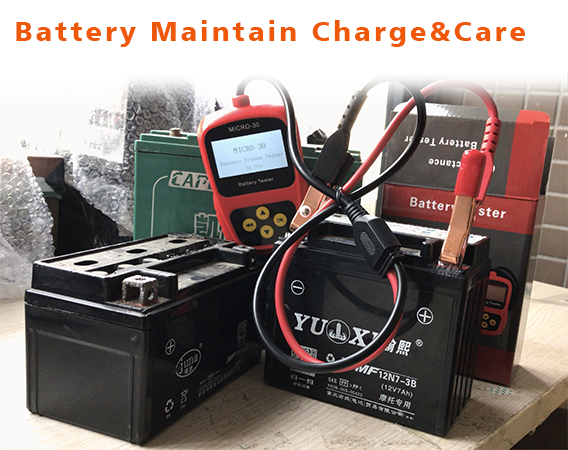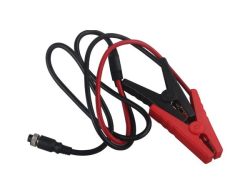Battery Maintenance Charging and Care-Liquid, AGM and Gel
2019-12-03
Maintain
* Make sure the terminals and connections are clean.
* Keep the battery clean as dirt and moisture lead to creep currents that slowly discharge the battery.
* Always make sure the battery is clamped.
* Battery capacity decreases during cooling. Preferably use it at room temperature where possible.
* Always ensure good ventilation.
* Batteries where the corks can be opened to check the electrolyte level (acid level) should be checked regularly. The liquid level should be 10-15mm above the plates. If necessary, top up with distilled deionized battery water (not battery acid).
* Do not recharge the batteries as they will do serious damage with shortened service life as a result.
NOTE! Never open the safety valves and never try to refill water in AGM and Gel batteries.
Charge
When you want to know the battery charge state, you can measure the resting voltage. This gives some idea of the state of charge. Note that the battery must stand approx. a day before reaching resting tension. A fully charged battery has a resting voltage depending on the battery type of approx. 12,70V. 12.40V equals 75%, 12.20V 50%, 11.80V 0%.
Measuring the acid weight with an acid tester is possible for the open batteries with corks and a more reliable measurable as each cell can be measured individually. Check the acid weight after charging by sucking up acid so that the float flows. Hold the meter straight (vertically) and at eye level when reading.
The acid weight of a fully charged battery is 1.28 g / cubic centimeter, 80% 1.24, 50% 1.17, 20% 1.10 and 10% 1.07. AGM and GEL batteries are slightly higher, approx. 12.80V at fully charged 12.65V at 75%, 12.00 at 25% and 11.80V at 0%.
For open batteries with corks that you can open so they should not be removed when charging.
All batteries have a certain self-discharge. Furthermore, the charge rate is often too low due to the amount of electrical equipment we have today and the short driving times we have. Therefore, one should recharge the battery with a separate charger or continuous maintenance charger. Use a good charger that has a charging curve that is adapted to the type of AGM, Gel or standard liquid acid batteries.
Also, make sure the charger is adjusted to the battery capacity of your battery. Do not use a charger that is too small.
The battery pack of the charger must be connected before charging is started. Make sure charging is completed. The ammeter should then show zero or near zero and if there are indicator lights it is usually the green which indicates fully charged.Turn off the charger before disconnecting the battery contacts after charging.
Care
* Fully charge the battery until you put it away.
* Keep the battery cool and dry, but not in minus degrees. Self-discharge decreases by half for every 10th degree the temperature is lowered.
* If you intend to store the battery for an extended period of time, disconnect it from the electrical system. Keep in mind that alarms, clocks etc. which are often connected to eg the summer car in the garage during the winter slowly discharges the battery with very harmful deep discharge and sulphation as a result.
* If the resting voltage drops below 12.4V then the battery must be recharged otherwise you risk harmful sulphation.
* Keep in mind that a low voltage battery can freeze at minus degrees.
The freezing point in degrees Celcius is at different charge degrees:
- 100% charged, -67 degrees Celsius
- 80% charged, -45 degrees Celcius
- 50% charged. -16 degrees Celcius
- 10% charged, -7 degrees Celsius






